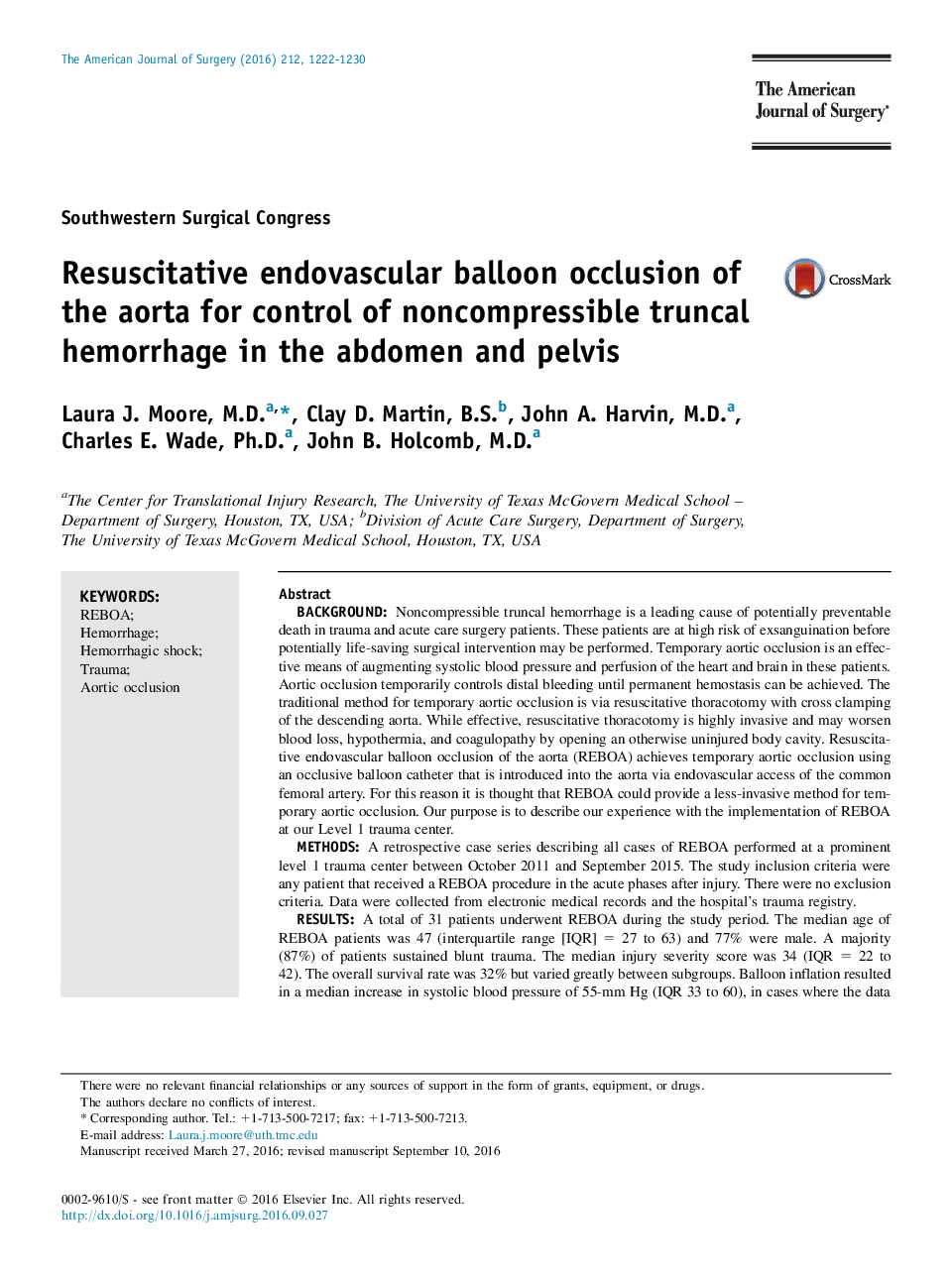| کد مقاله | کد نشریه | سال انتشار | مقاله انگلیسی | نسخه تمام متن |
|---|---|---|---|---|
| 5731353 | 1611476 | 2016 | 9 صفحه PDF | دانلود رایگان |
BackgroundNoncompressible truncal hemorrhage is a leading cause of potentially preventable death in trauma and acute care surgery patients. These patients are at high risk of exsanguination before potentially life-saving surgical intervention may be performed. Temporary aortic occlusion is an effective means of augmenting systolic blood pressure and perfusion of the heart and brain in these patients. Aortic occlusion temporarily controls distal bleeding until permanent hemostasis can be achieved. The traditional method for temporary aortic occlusion is via resuscitative thoracotomy with cross clamping of the descending aorta. While effective, resuscitative thoracotomy is highly invasive and may worsen blood loss, hypothermia, and coagulopathy by opening an otherwise uninjured body cavity. Resuscitative endovascular balloon occlusion of the aorta (REBOA) achieves temporary aortic occlusion using an occlusive balloon catheter that is introduced into the aorta via endovascular access of the common femoral artery. For this reason it is thought that REBOA could provide a less-invasive method for temporary aortic occlusion. Our purpose is to describe our experience with the implementation of REBOA at our Level 1 trauma center.MethodsA retrospective case series describing all cases of REBOA performed at a prominent level 1 trauma center between October 2011 and September 2015. The study inclusion criteria were any patient that received a REBOA procedure in the acute phases after injury. There were no exclusion criteria. Data were collected from electronic medical records and the hospital's trauma registry.ResultsA total of 31 patients underwent REBOA during the study period. The median age of REBOA patients was 47 (interquartile range [IQR] = 27 to 63) and 77% were male. A majority (87%) of patients sustained blunt trauma. The median injury severity score was 34 (IQR = 22 to 42). The overall survival rate was 32% but varied greatly between subgroups. Balloon inflation resulted in a median increase in systolic blood pressure of 55-mm Hg (IQR 33 to 60), in cases where the data were available (n = 20). A return to spontaneous circulation was noted in 60% of patients who had arrested before REBOA (n = 10). Overall, early death by hemorrhage was 28% with only 2 deaths in the emergency department before reaching the operating room.ConclusionsREBOA is an effective method for achieving temporary aortic occlusion in trauma patients with noncompressible truncal hemorrhage. Balloon inflation correlated with increased blood pressure and temporary hemorrhage control in a vast majority of patients.
Journal: The American Journal of Surgery - Volume 212, Issue 6, December 2016, Pages 1222-1230
